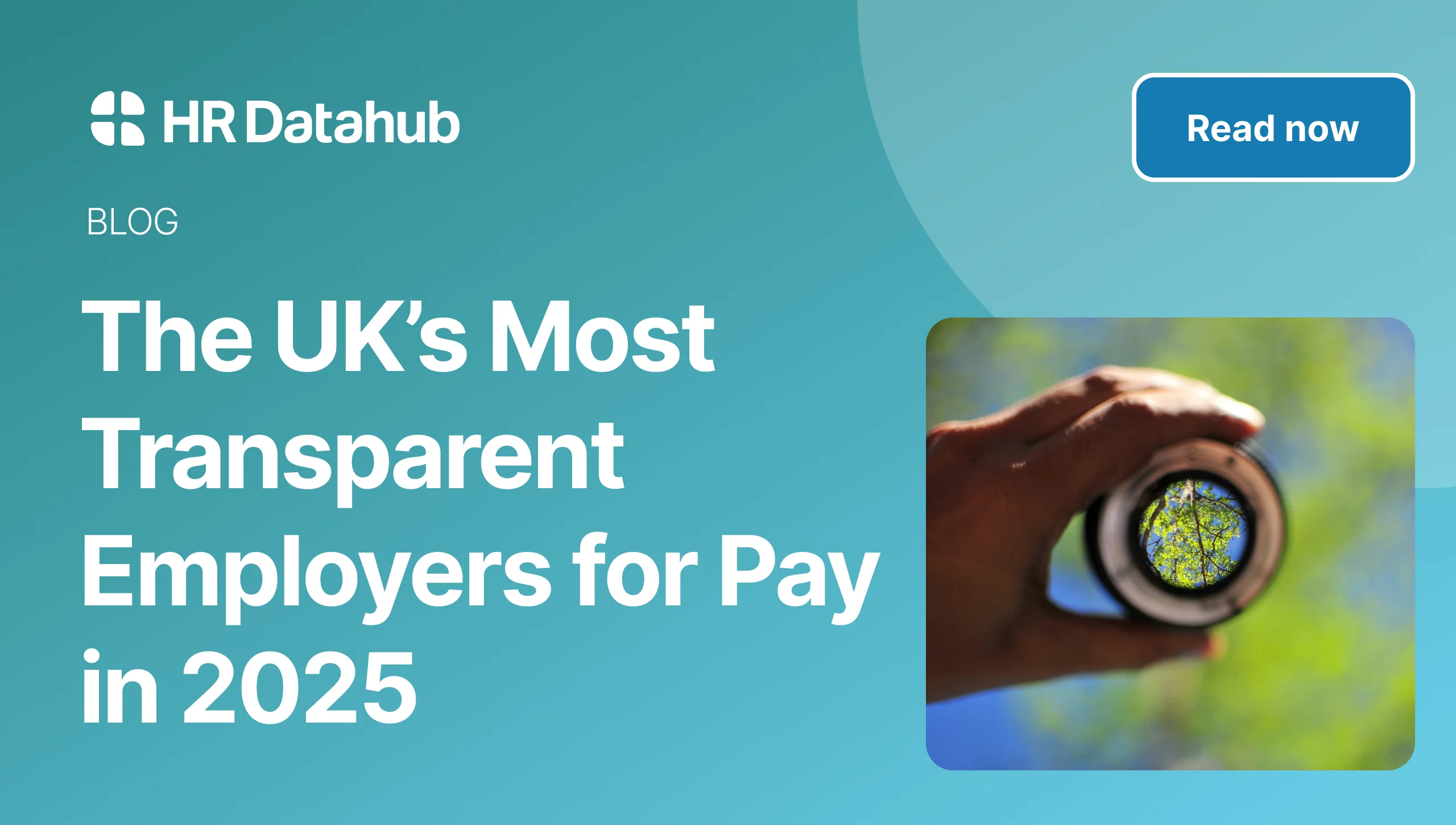

January 29, 2024
January 29, 2024
EU Pay Transparency Directive - Everything HR Leaders Need to Know

Published by:
Alexa Grellet
,
COO & Co-Founder
,
HR DataHub

Reviewed by:
David Whitfield
,
CEO & Co-Founder
,
HR DataHub

4
MIN READ time
.webp)
Your EU Pay Transparency toolkit: Everything you need to know in one place
There’s been a big push in recent years to address the gender pay gap.
Back in 2017, the government introduced mandatory gender pay gap reporting for companies with over 250 employees. This step has been credited for raising awareness of the gap. And putting pressure on businesses to help close it.
But reporting is just the beginning.
If you work in HR, you’ll know that pay transparency is a hot topic.
Lack of salary transparency is identified as one of the main obstacles to closing the gender gap.
So why is pay transparency so important?
- It drives increased awareness and accountability, highlighting gender-based pay disparities.
- It enhances employee negotiation power, giving women in particular, a stronger position to negotiate salaries and benefits by having access to pay data.
- It prevents unintentional bias, helping businesses identify and address issues that contribute to gender pay gaps.
- It helps companies attract and retain talent, including women seeking fair and equitable pay.
During recruitment, transparency is essential. According to PayScale research, employees are more likely to leave within six months of hire if the pay process isn't transparent. And Talent.com research found that 74% of job seekers believe wage transparency in the workplace creates a fairer environment for everyone.
In the UK, the government’s pay transparency pilot scheme, launched in 2022, encourages businesses to include salaries in job advertisements, recognising a lack of transparency during recruitment that contributes to pay inequality. But it’s not enforced. Or mandatory.
In contrast, the EU is introducing a new directive that enforces and mandates participation from EU businesses.
Let’s explore what it means for employers and employees, and its potential impact on UK business compliance.
What is the EU Pay Transparency Directive?
The EU Pay Transparency Directive was originally raised in 2021 by the European Commission to reduce gender pay gaps throughout the EU.
The directive aims to firm up the principle of equal pay for equal work for men and women by using transparency and greater enforcement.
It’s now been formally agreed upon by the European Parliament, Council & Commission - meaning it’s GO time for businesses to start preparations for implementation.
All companies within the EU will need to take action against any pay discrepancies in their business related to gender. They’ll also need to review and update their existing practices relating to pay to make sure they comply.
Who will the Pay Transparency Directive affect?
The new directive will affect businesses and employees working or living in EU member states.
However, while it only applies to EU members (along with non-EU employers who employ people in the EU), it’s likely to raise the expectations of pay transparency in the UK. Which could put pressure on the UK Government to introduce similar legislation to match the standards set in the EU.
Whilst gender pay gap reporting isn’t new to UK employers, the additional requirements go beyond the current scope of UK legislation - and so does the enforcement. With EU companies facing potential sanctions or penalties for failure to comply.
Our advice? Start looking at how the changes could impact your business - particularly if you’re not already focusing on salary transparency. And start planning.
How will the Pay Transparency Directive affect employers and employees?
For Employers
The biggest change for businesses is obviously around transparency of pay, including what information is made available to employees and shared publicly. All pay information needs to also be kept up-to-date and accurate.
Some of the biggest changes include:
- Making the criteria businesses use to determine pay levels accessible to all workers.
- Complying with requests from workers for data relating to their pay level and average pay levels for colleagues doing the same work (or equal) work to them, broken down by gender.
- Publishing detailed statistics around gender pay gaps (for businesses with more than 100 employees)
- If a 5% or more non-justified gender pay gap is identified, a pay assessment must be carried out, and the organisation must rectify the difference.
One of the most significant changes relates to pay discrimination cases.
Traditionally the burden of proof has been laid with the employee. But under the new directive, this shifts to the employer.
For Employees
The changes will mean better pay transparency for jobseekers.
Employers must provide information about pay levels in job descriptions, or before interviews, as part of the recruitment process.
Importantly, employers also won’t be allowed to ask candidates about their pay history, which is proven to negatively impact women seeking employment who are systematically paid less than men and perpetuates pay gender disparities.
In a study from the Fawcett Society, 58% of women said they felt they received a lower salary offer than they would have if they hadn’t been asked about previous salary during recruitment.
This level of transparency will change how people search for jobs and negotiate salaries.
There will also be fairer compensation for victims of pay discrimination based on gender. Because the burden of proof is now with the employer, if they don’t fulfil their obligations around pay transparency it will be the employer, not the employee, who must prove there was no pay discrimination.
When does the Directive come into force?
The Directive was approved by the EU Parliament on 30 March 2023, formally adopted by the EU Council on 24 April 2023 and officially came into force on 7 June 2023.
This means EU businesses need to start preparing for the new pay transparency requirements.
They have until June 2026 to introduce a range of new obligations, including compulsory audits, penalties for unjustified discrepancies and regular reporting for larger organisations.
Businesses need to start preparing now.
While EU businesses have a specific deadline to meet, we predict it won’t be long before UK businesses could be required to follow suit.
You may already have had to look at your own shortcomings around pay equality if you’ve been publicly reporting the gender pay gap. But if you’re a small to medium-sized business, now is the time to get your house in order.
It’s no secret that unjustifiable pay discrepancies risk damaging your workplace culture and increasing your turnover, but they can also impact your business reputation.
Start by designing effective performance metrics that link to pay transparency, which can help take pressure off managers to judge individual performance during appraisals.
Consider training your managers to help facilitate communication around pay. And take a look at your existing reward systems and update where necessary, to work towards creating equity for everyone.
At HR DataHub, we can give you access to real-time UK job market data - so you can make the right pay decisions for your people. Contact us to find out more.
TABLE OF CONTENTS




.jpg)

